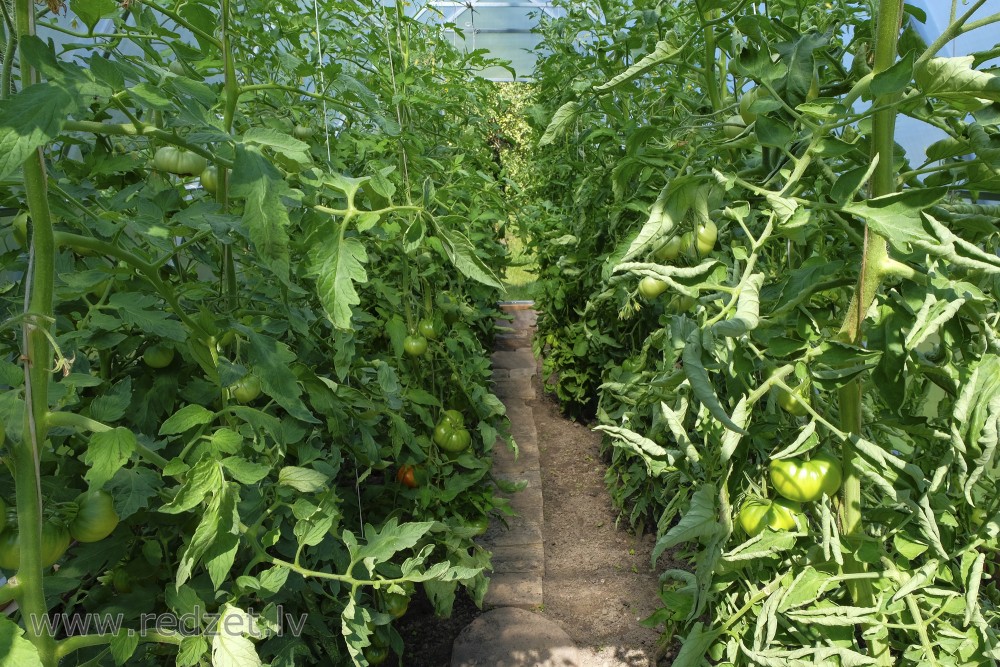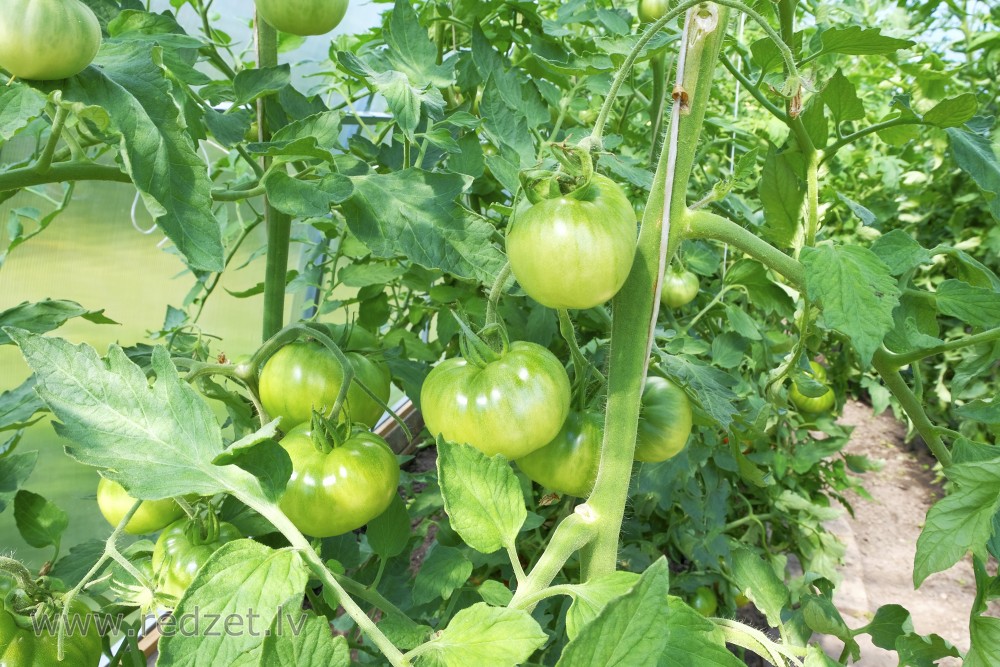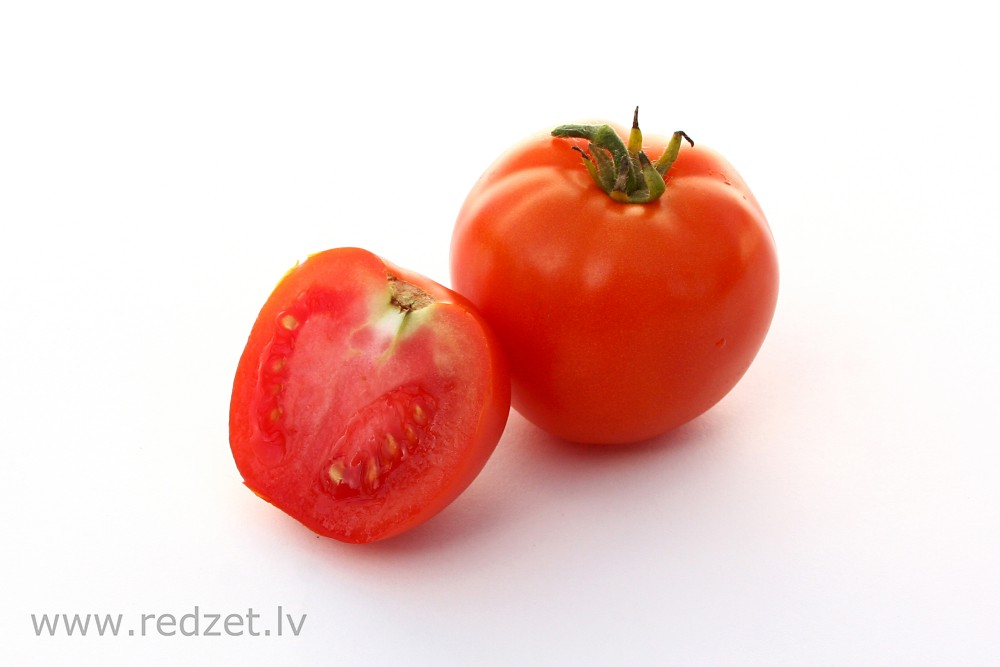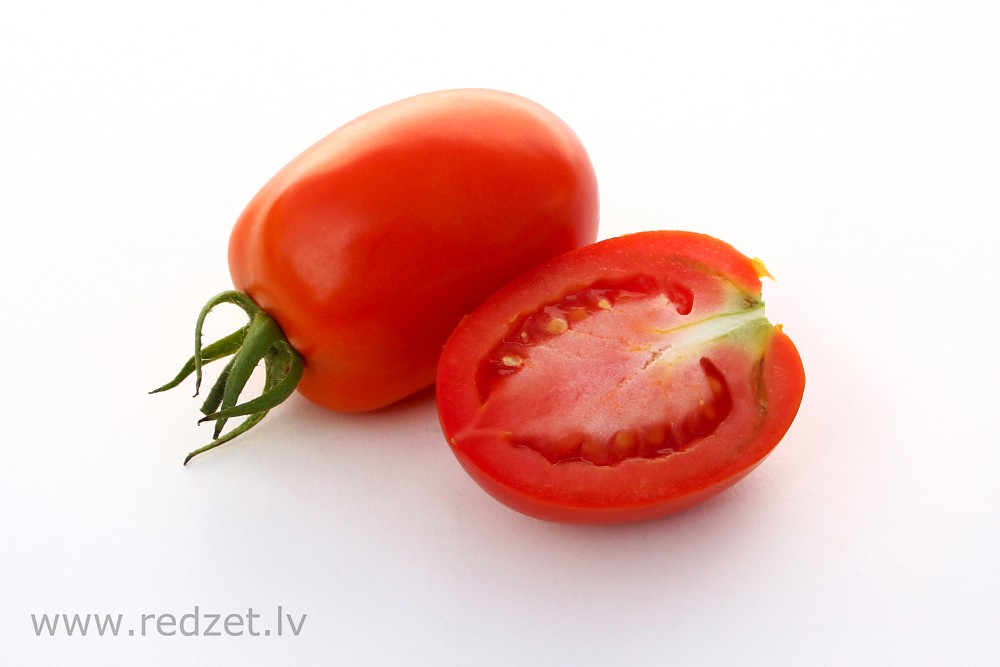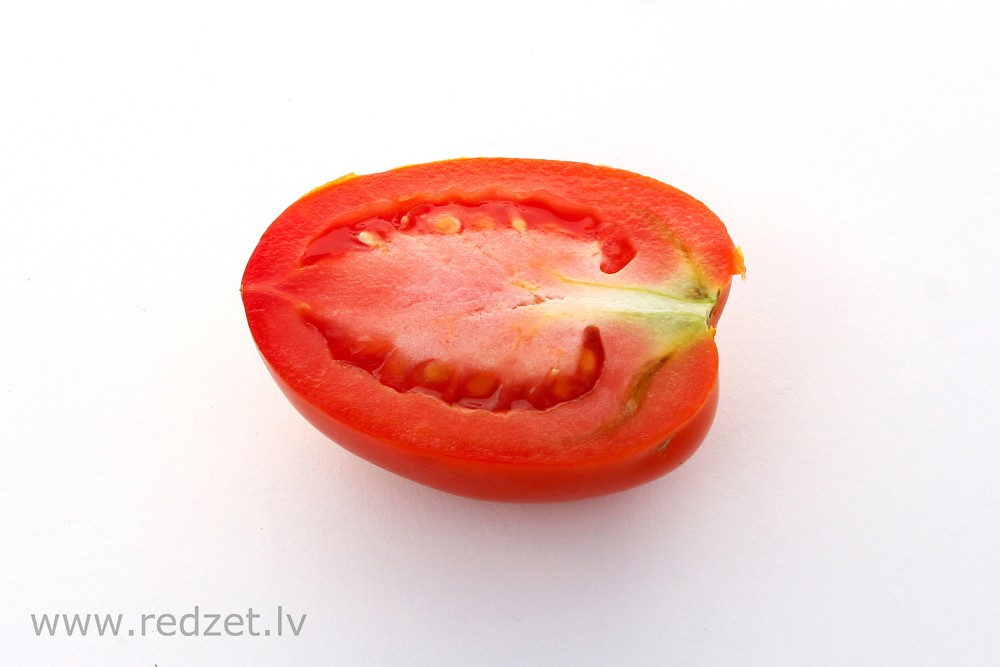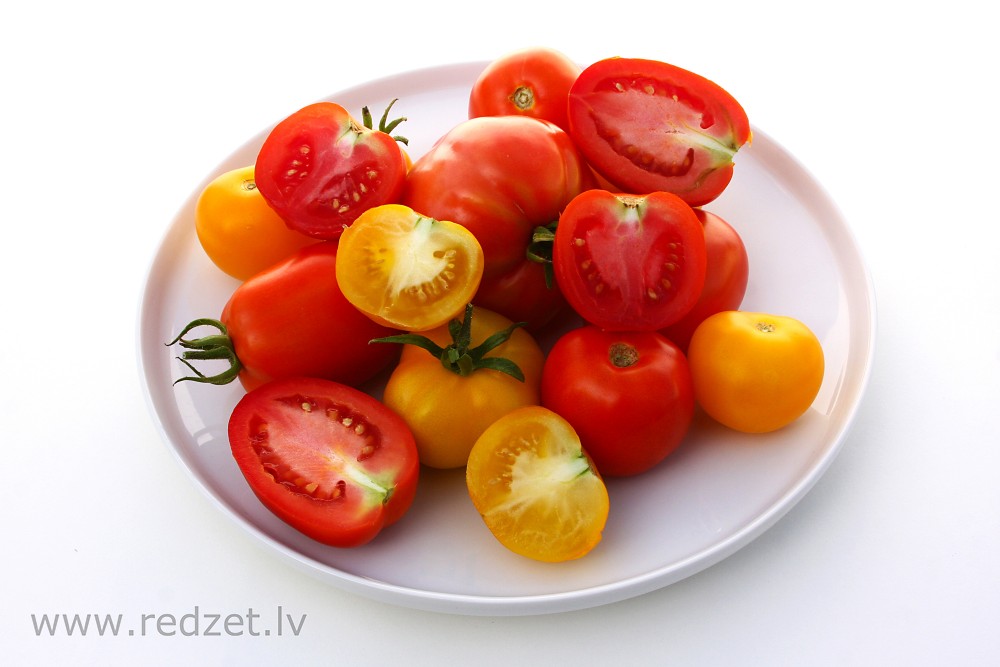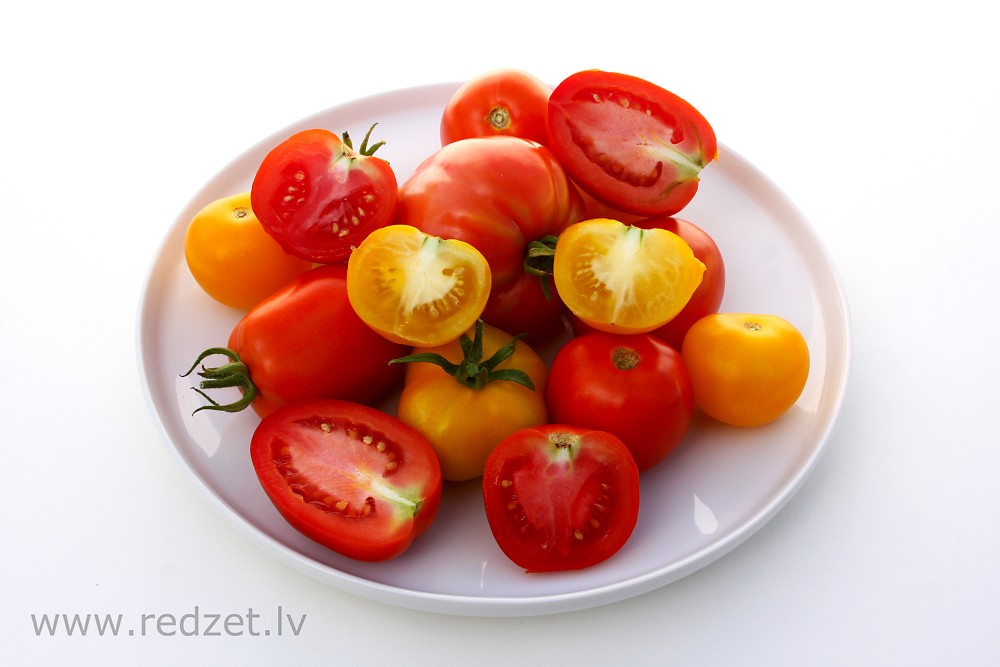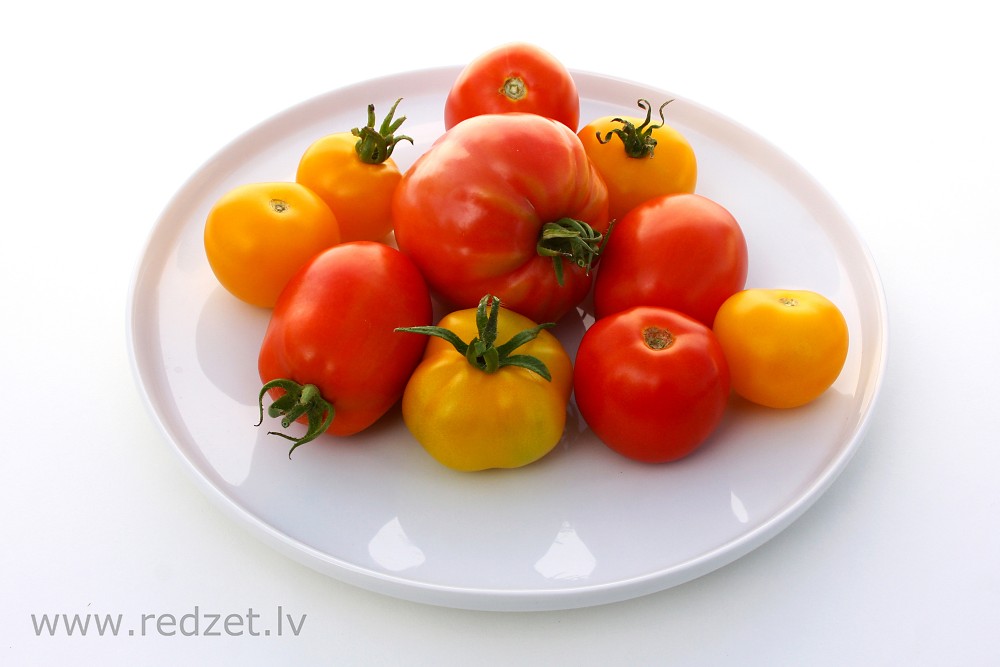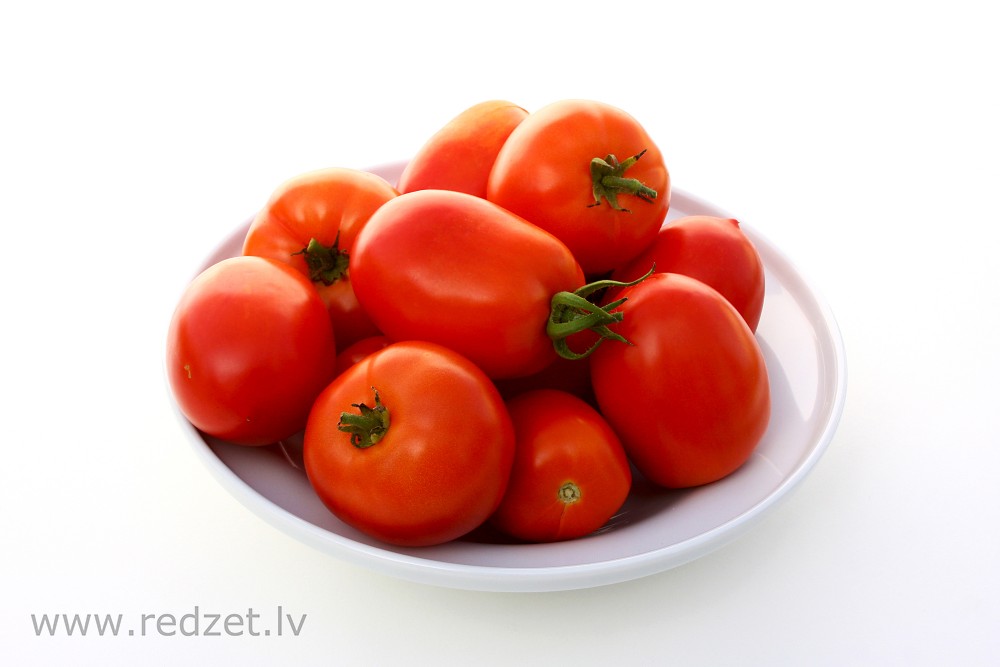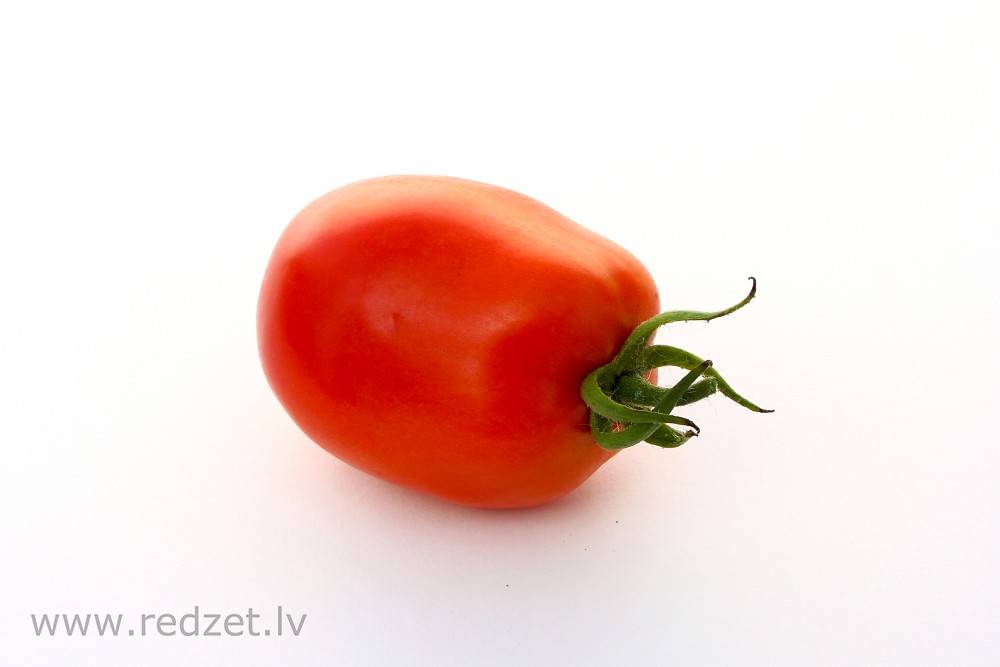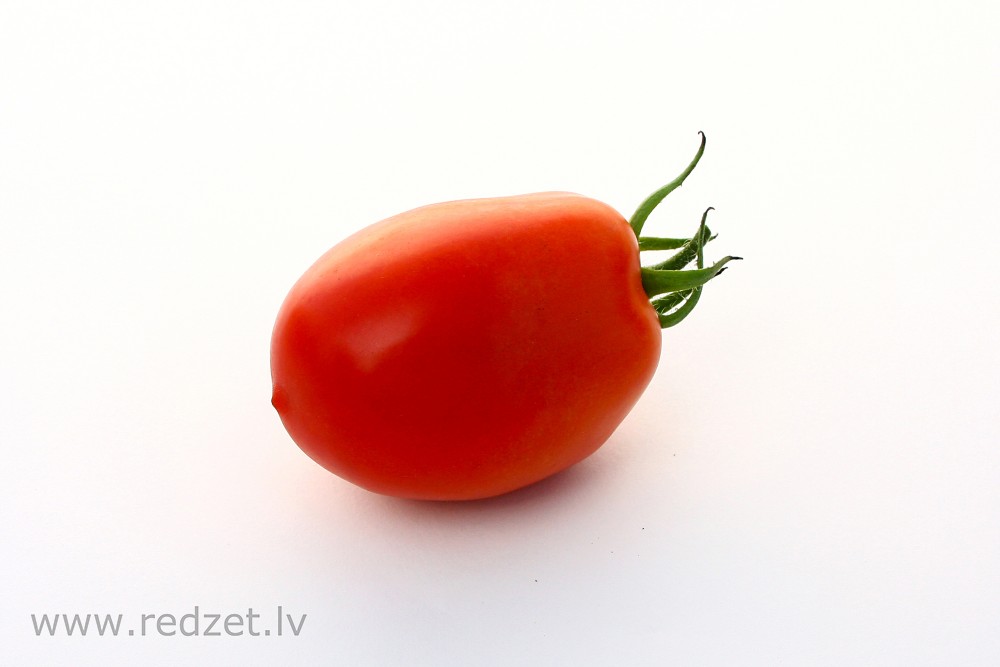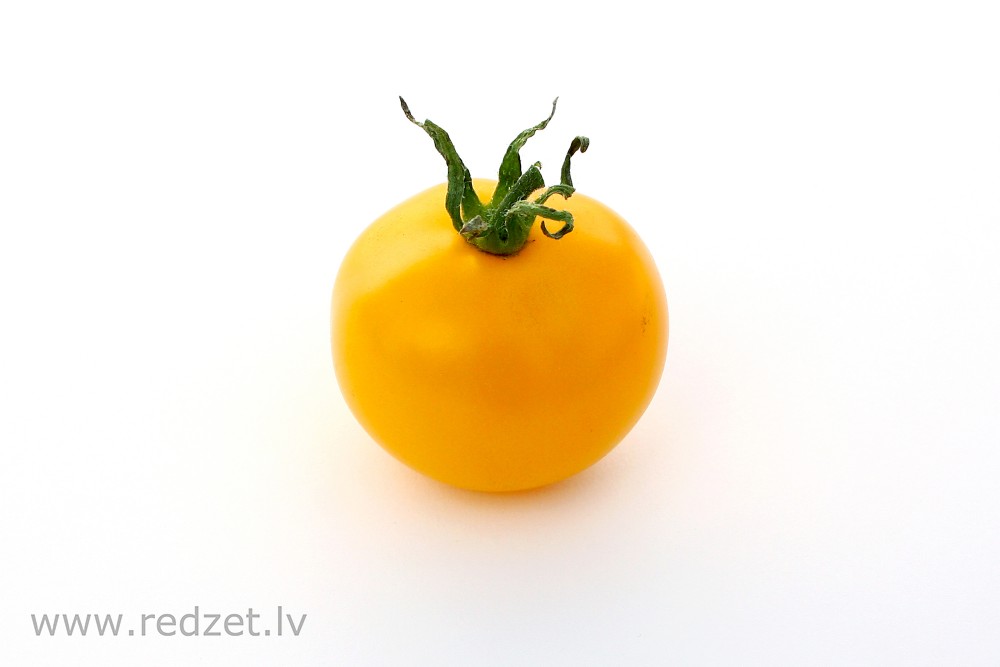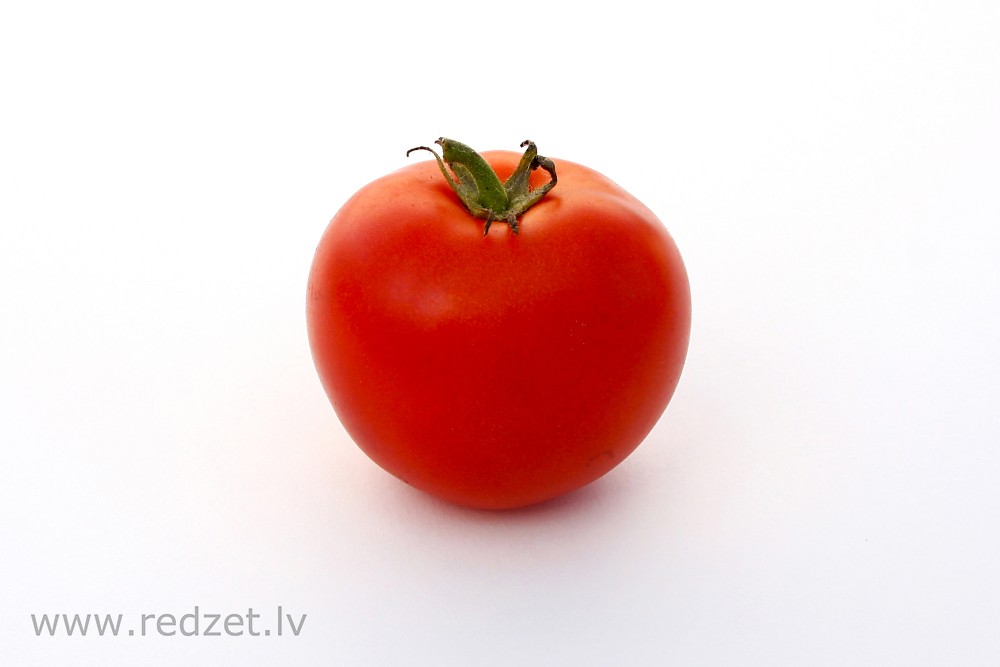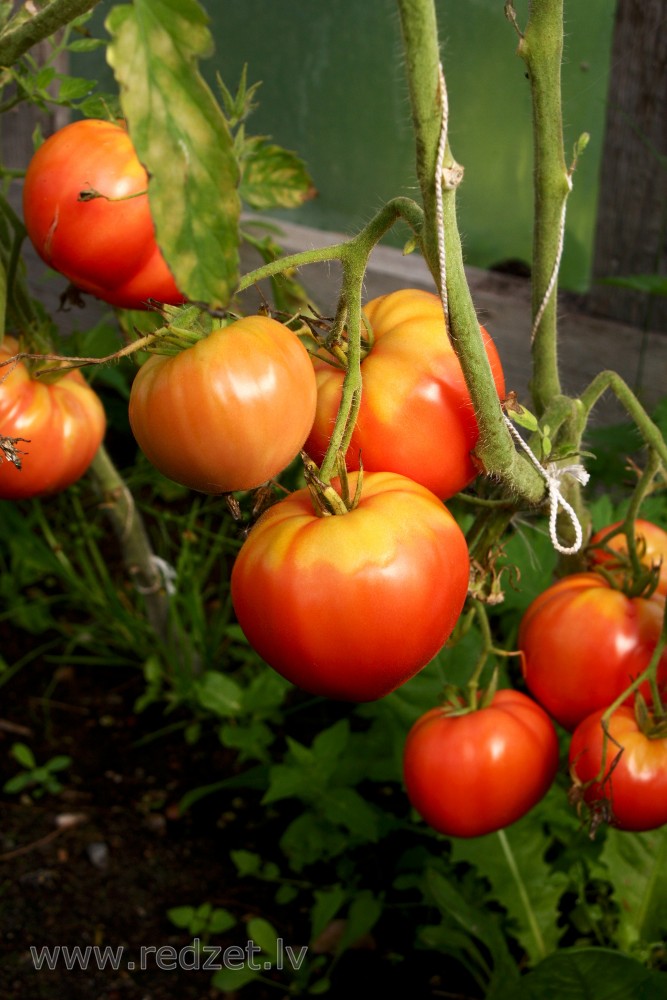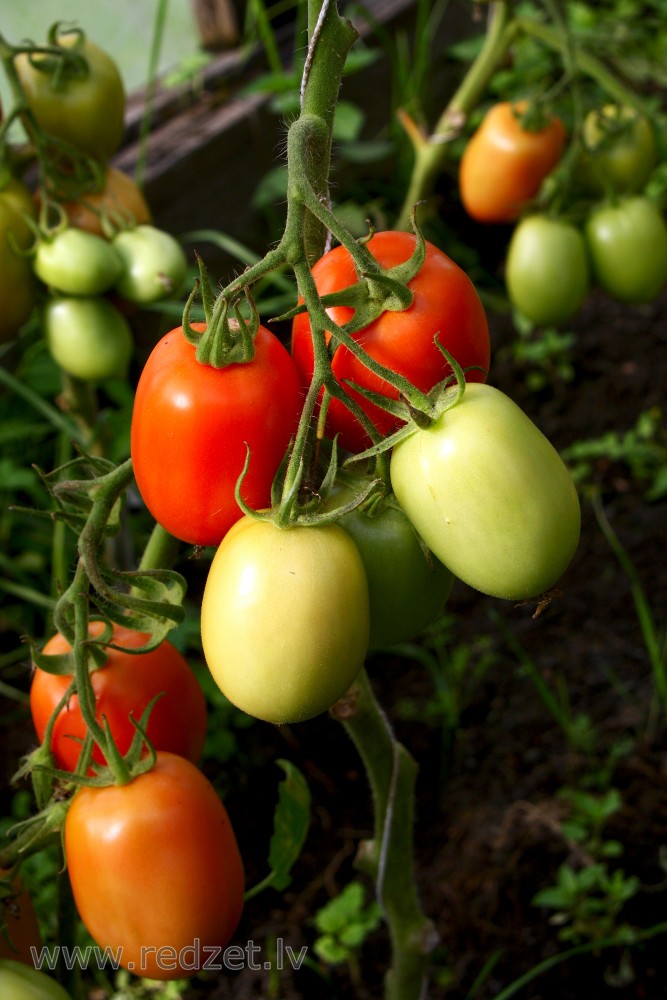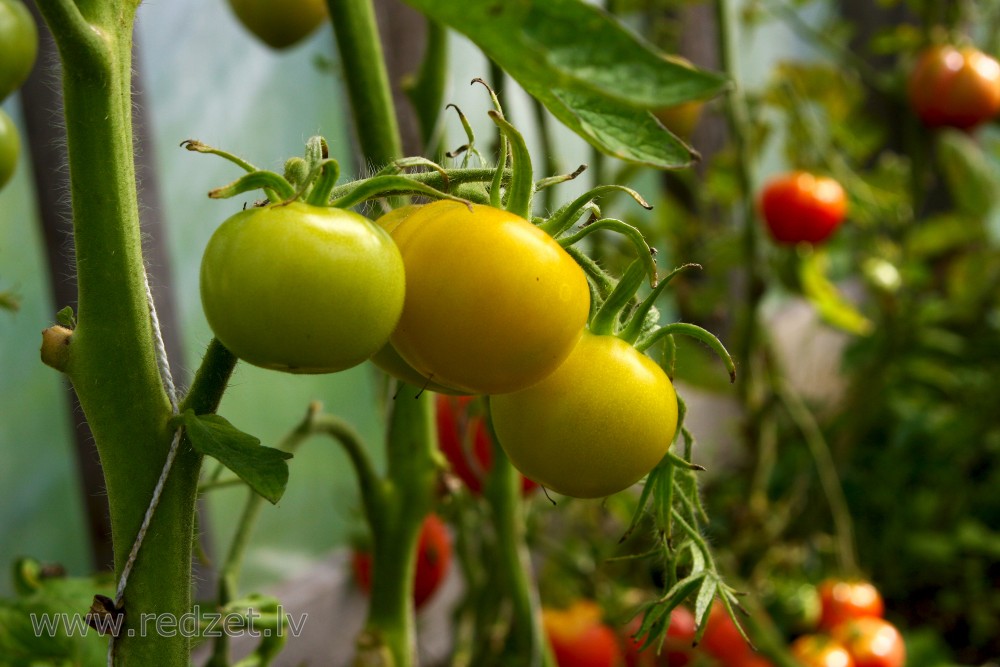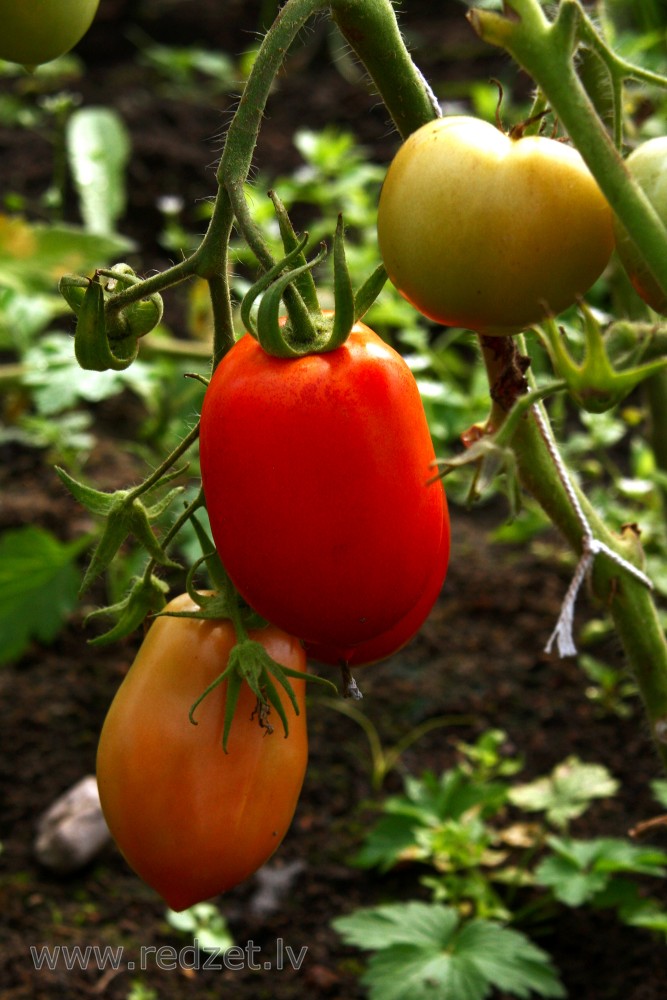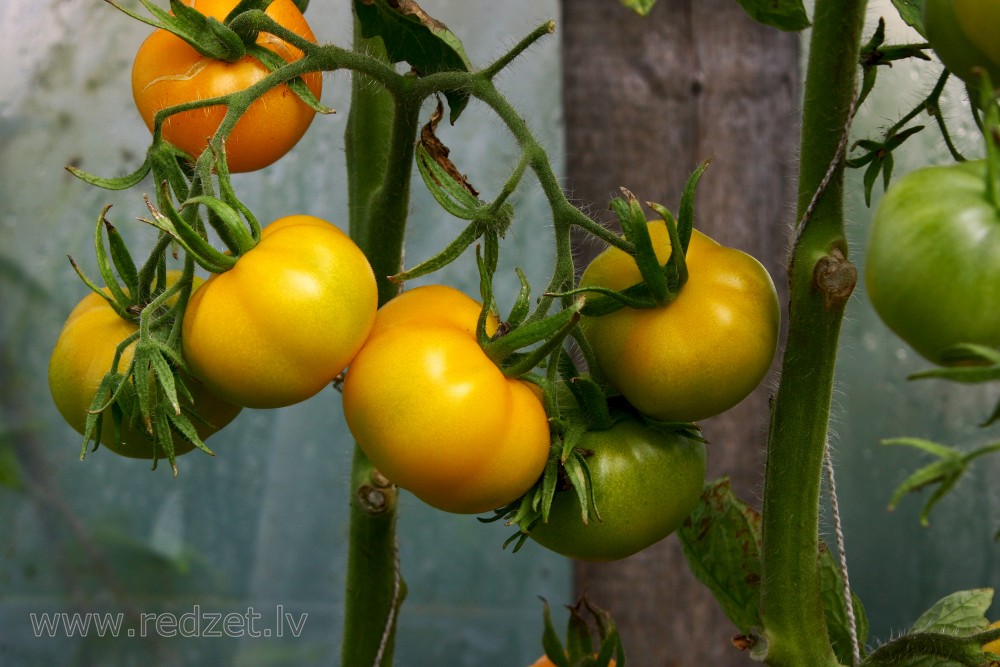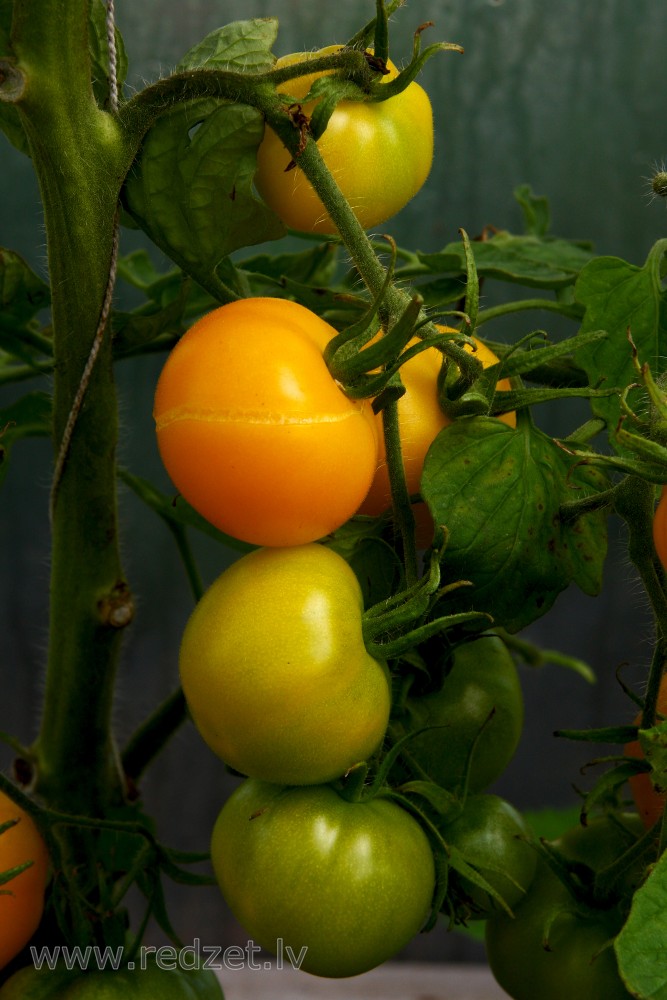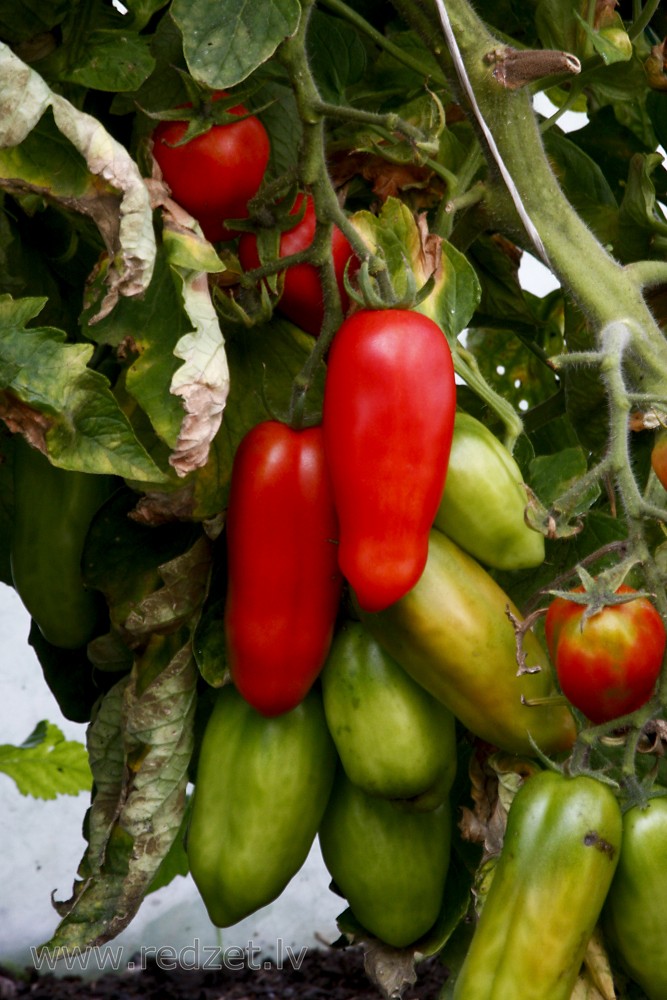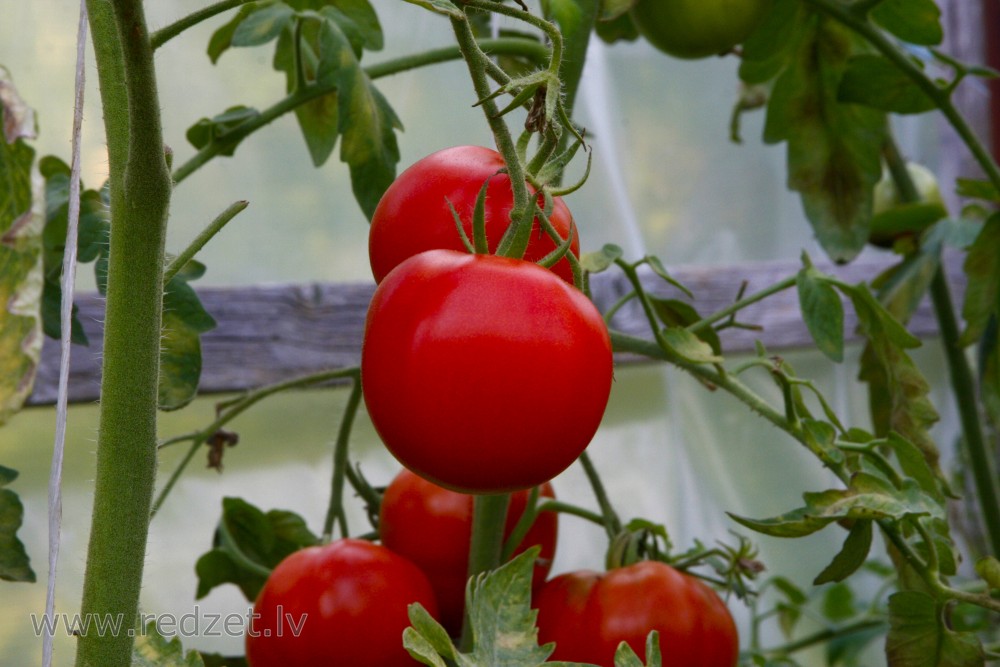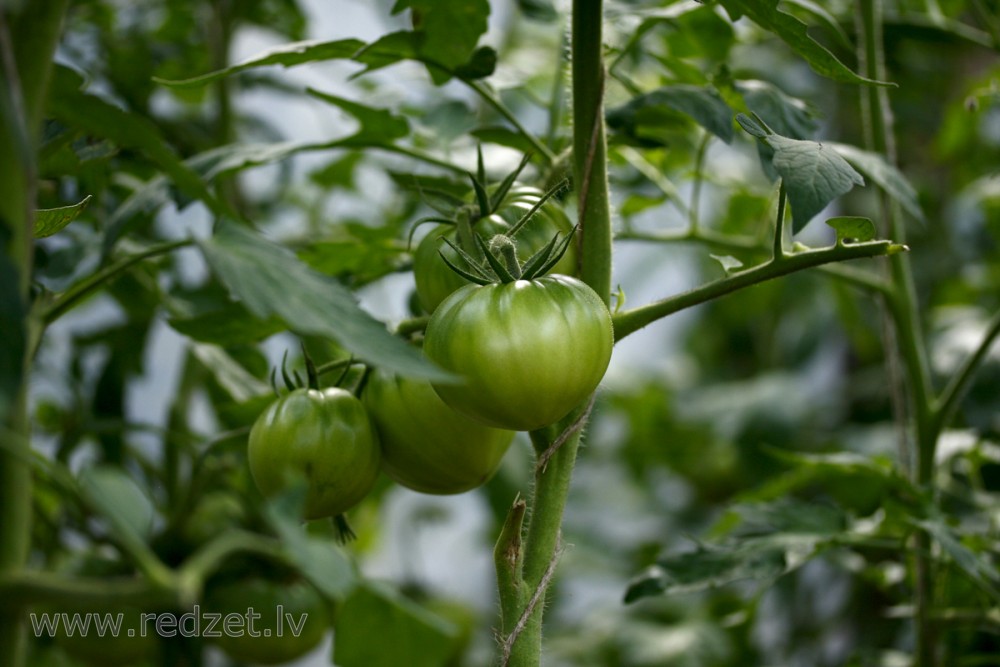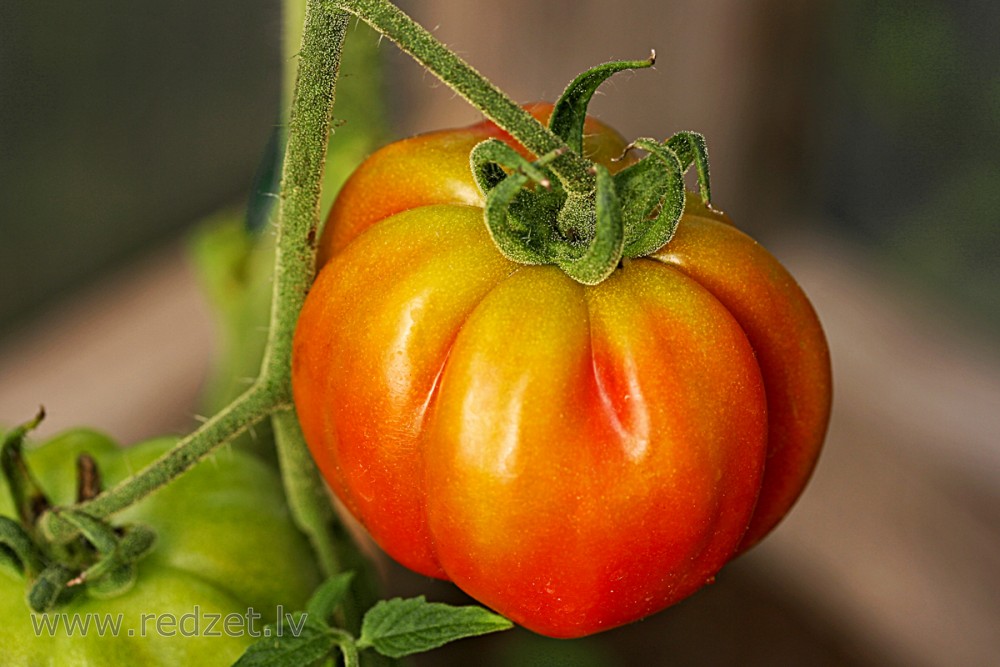Tomato (Solanum lycopersicum)
The tomato is the edible, often red, fruit/berry of the plant Solanum lycopersicum, commonly known as a tomato plant. The plant belongs to the nightshade family, Solanaceae. The species originated in western South America. The Nahuatl (Aztec language) word tomatl gave rise to the Spanish word "tomate", from which the English word tomato derived. Its use as a cultivated food may have originated with the indigenous peoples of Mexico. The Spanish discovered the tomato from their contact with the Aztec peoples during the Spanish colonization of the Americas, then brought it to Europe, and, from there, to other parts of the European colonized world during the 16th century.
Tomato is consumed in diverse ways, including raw, as an ingredient in many dishes, sauces, salads, and drinks. While tomatoes are botanically berry-type fruits, they are considered culinary vegetables as an ingredient or side dish for savory meals. Numerous varieties of tomato are widely grown in temperate climates across the world, with greenhouses allowing its production throughout the year. The plants typically grow to 1–3 meters (3–10 ft) in height and have a weak stem that sprawls. It is a perennial in its native habitat, and cultivated as an annual. Fruit size varies according to cultivar, with a width range of 0.5–4 inches (1.3–10.2 cm).
Scientific classification
Kingdom: Plantae
Order: Solanales
Family: Solanaceae
Genus: Solanum
Species: S. lycopersicum
Botany
Description
Tomato plants are vines, initially decumbent, typically growing 180 cm (6 ft) or more above the ground if supported, although erect bush varieties have been bred, generally 100 cm (3 ft) tall or shorter. Indeterminate types are "tender" perennials, dying annually in temperate climates (they are originally native to tropical highlands), although they can live up to three years in a greenhouse in some cases. Determinate types are annual in all climates.
Tomato plants are dicots, and grow as a series of branching stems, with a terminal bud at the tip that does the actual growing. When that tip eventually stops growing, whether because of pruning or flowering, lateral buds take over and grow into other, fully functional, vines.
Tomato vines are typically pubescent, meaning covered with fine short hairs. These hairs facilitate the vining process, turning into roots wherever the plant is in contact with the ground and moisture, especially if the vine's connection to its original root has been damaged or severed.
Most tomato plants have compound leaves, and are called regular leaf (RL) plants, but some cultivars have simple leaves known as potato leaf (PL) style because of their resemblance to that particular relative. Of RL plants, there are variations, such as rugose leaves, which are deeply grooved, and variegated, angora leaves, which have additional colors where a genetic mutation causes chlorophyll to be excluded from some portions of the leaves.
The leaves are 10–25 cm (4–10 in) long, odd pinnate, with five to 9 leaflets on petioles, each leaflet up to 8 cm (3 in) long, with a serrated margin; both the stem and leaves are densely glandular-hairy.
Their flowers, appearing on the apical meristem, have the anthers fused along the edges, forming a column surrounding the pistil's style. Flowers in domestic cultivars can be self-fertilizing. The flowers are 1–2 cm (0.4–0.8 in) across, yellow, with five pointed lobes on the corolla; they are borne in a cyme of three to 12 together.
Tomato fruit is classified as a berry. As a true fruit, it develops from the ovary of the plant after fertilization, its flesh comprising the pericarp walls. The fruit contains hollow spaces full of seeds and moisture, called locular cavities. These vary, among cultivated species, according to type. Some smaller varieties have two cavities, globe-shaped varieties typically have three to five, beefsteak tomatoes have a great number of smaller cavities, while paste tomatoes have very few, very small cavities.
For propagation, the seeds need to come from a mature fruit, and be dried or fermented before germination.
Classification
In 1753, Linnaeus placed the tomato in the genus Solanum (alongside the potato) as Solanum lycopersicum. In 1768, Philip Miller moved it to its own genus, naming it Lycopersicon esculentum. This name came into wide use, but was technically in breach of the plant naming rules because Linnaeus's species name lycopersicum still had priority. Although the name Lycopersicum lycopersicum was suggested by Karsten (1888), this is not used because it violates the International Code of Nomenclature barring the use of tautonyms in botanical nomenclature. The corrected name Lycopersicon lycopersicum (Nicolson 1974) was technically valid, since Miller's genus name and Linnaeus's species name differ in exact spelling, but since Lycopersicon esculentum had become so well known, it was officially listed as a nomen conservandum in 1983, and would be the correct name for the tomato in classifications which do not place the tomato in the genus Solanum.
Genetic evidence has now shown that Linnaeus was correct to put the tomato in the genus Solanum, making Solanum lycopersicum the correct name. Both names, however, will probably be found in the literature for some time. Two of the major reasons that some still consider the genera separate are the leaf structure (tomato leaves are markedly different from any other Solanum), and the biochemistry (many of the alkaloids common to other Solanum species are conspicuously absent in the tomato). Hybrids of tomato and diploid potato can be created in the lab by somatic fusion, and are partially fertile, providing evidence of the close relationship between these species.
Genetic modification
Tomatoes that have been modified using genetic engineering have been developed, and although none are commercially available now, they have been in the past. The first commercially available genetically modified food was a variety of tomato named the Flavr Savr, which was engineered to have a longer shelf life. Scientists are continuing to develop tomatoes with new traits not found in natural crops, such as increased resistance to pests or environmental stresses. Other projects aim to enrich tomatoes with substances that may offer health benefits or provide better nutrition.
An international consortium of researchers from 10 countries, among them researchers from the Boyce Thompson Institute for Plant Research, began sequencing the tomato genome in 2004, and is creating a database of genomic sequences and information on the tomato and related plants. A prerelease version of the genome was made available in December 2009. The genomes of its mitochondria and chloroplasts are also being sequenced as part of the project. The complete genome for the cultivar Heinz 1706 was published on 31 May 2012 in Nature. Since many other fruits, like strawberries, apples, melons, and bananas share the same characteristics and genes, researchers stated the published genome could help to improve food quality, food security and reduce costs of all of these fruits.
Breeding
The Tomato Genetic Resource Center, Germplasm Resources Information Network, AVRDC, and numerous seed banks around the world store seed representing genetic variations of value to modern agriculture. These seed stocks are available for legitimate breeding and research efforts. While individual breeding efforts can produce useful results, the bulk of tomato breeding work is at universities and major agriculture-related corporations. These efforts have resulted in significant regionally adapted breeding lines and hybrids, such as the Mountain series from North Carolina. Corporations including Heinz, Monsanto, BHNSeed, and Bejoseed have breeding programs that attempt to improve production, size, shape, color, flavor, disease tolerance, pest tolerance, nutritional value, and numerous other traits.
en.wikipedia.org










